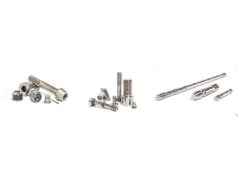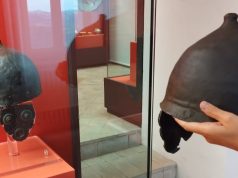The Air Force Research Laboratory (AFRL), Missile Propulsion Division, recently designed, printed, built and fired a thrust chamber for a rocket engine block. The team used a 3D printing process called Directed Energy Deposition (DED).
The DED process allows metal powder to be deposited into highly focused laser beams under controlled atmospheric conditions.
“AFRL’s investments in early advanced manufacturing techniques enable us to exploit corners of the design space for rocket engines and enable faster design turnover cycles from a concept in a whiteboard to test & evaluation in the field,” said Dr. Javier Urzay, chief Combustion Devices Branch.
Compared to other methods such as Laser Powder Bed Fusion (LPBF), DED requires significantly less powder and greatly reduces material waste.
“It provides the largest build box volume for thruster hardware to date, capable of printing seven-foot-tall parts. This build box volume is much larger than that obtainable with techniques like the laser powder bed fusion, or LPBF, process. In addition, DED enables an order of magnitude less investment in powder and less material waste. Engineers can also realize alloy blending and transitions in real time for multi-alloy builds to exploit the strength, weight and performance gains of next-generation superalloys,” said Urzay.
Another benefit of this technology is the ability to mix alloys and create transitions in real time, enabling the use of advanced superalloys and the optimization of strength, weight and performance.
“These unique capabilities allow us to tackle complex engine designs requiring fewer iterations and leveraging shape optimization, lightweight materials, advanced metal alloys and composites, and rapid manufacturing,” Urzay said.
The Rocket Propulsion Division is working closely with the U.S. aerospace industry to integrate these additive manufacturing processes into robust digital engineering environments. These digital environments support the transition from traditional manufacturing methods to automated processes fueled by artificial intelligence, machine learning, digital twins, 3D volume scanners and computer-aided design (CAD).
“While additive manufacturing offers many opportunities for accelerated production at lower costs, several challenges remain in the way of making this technology widely adopted by the rocket-propulsion industry and government laboratories,” said Edgar Felix, aerospace engineer at the Combustion Devices Branch.
AFRL and its partners continue to work on innovative techniques for 3D printing with the goal of significantly increasing capabilities for both liquid and solid rocket engines.
“This latest breakthrough in additive manufacturing for rocket engines in our branch is one in a series that has been made possible only by forging long-lasting relationships across multiple industrial partners and government organizations, including the AFRL Materials and Manufacturing Directorate and NASA Marshall Space Flight Center,” Urzay said. “Their work is extremely valuable for the nation, and together we are an unstoppable team.”
Subscribe to our Newsletter
3DPresso is a weekly newsletter that links to the most exciting global stories from the 3D printing and additive manufacturing industry.






















